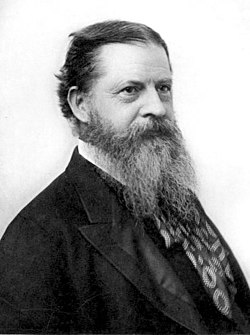This article provides insufficient context for those unfamiliar with the subject. (July 2017) |
| Part of a series on |
| Charles Sanders Peirce |
|---|
 |
| Pragmatism in epistemology |
| Logic |
| Semiotic theory |
| Miscellaneous contributions |
| Biographical |
On May 14, 1867, the 27–year-old Charles Sanders Peirce, who eventually founded pragmatism, presented a paper entitled "On a New List of Categories" to the American Academy of Arts and Sciences. Among other things, this paper outlined a theory of predication involving three universal categories that Peirce continued to apply in philosophy and elsewhere for the rest of his life.[1][2] The categories demonstrate and concentrate the pattern seen in "How to Make Our Ideas Clear" (1878, the foundational paper for pragmatism), and other three-way distinctions in Peirce's work.
- ^ Burch, Robert W. (2001, 2010), "Charles Sanders Peirce", Stanford Encyclopedia of Philosophy. See §9 "Triadism and the Universal Categories".
- ^ Bergman, Michael K. (2018), A Knowledge Representation Practionary: Guidelines Based on Charles Sanders Peirce, Springer Nature Switzerland AG, Cham, Switzerland. See Table 6.2 for about 60 examples throughout Peirce's career.